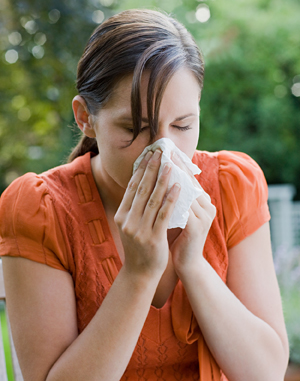Causes of Nasal Allergies
Nasal allergies are most commonly caused by one or more of four kinds of allergens: pollen (which causes seasonal allergies), house-dust mites, mold, and animals. Other substances, called irritants, can bother the nose and make allergy symptoms worse.

Pollen
Plants reproduce by moving tiny grains of pollen from plant to plant. Some pollen is carried by bees, and some is blown by the wind. It’s the wind-blown pollen that causes nasal allergies. The amount of pollen in the air varies from season to season.
House-dust mites
House-dust mites are tiny bugs too small to see. They can live in mattresses, blankets, stuffed toys, carpets, and curtains. The droppings of these mites are a common indoor cause of nasal allergies.
Mold
Mold loves dark, damp areas. It tends to grow in bathrooms, basements, refrigerators, and in the soil of houseplants. Mold reproduces by sending tiny grains called spores into the air. If these spores are breathed in, they can cause a nasal allergic reaction.
Animals
Pets such as cats, dogs, birds, horses, and rabbits are common causes of nasal allergies. Flakes of skin (dander), saliva left on fur when an animal cleans itself, urine in litter boxes and cages, and feathers can all cause nasal allergies.
Irritants make allergies worse
Although irritants don’t cause nasal allergies, they can make allergy symptoms worse. Cigarette smoke, perfume, aerosol sprays, smoke from wood stoves or fireplaces, car exhaust, and strong odors are examples of irritants.
|